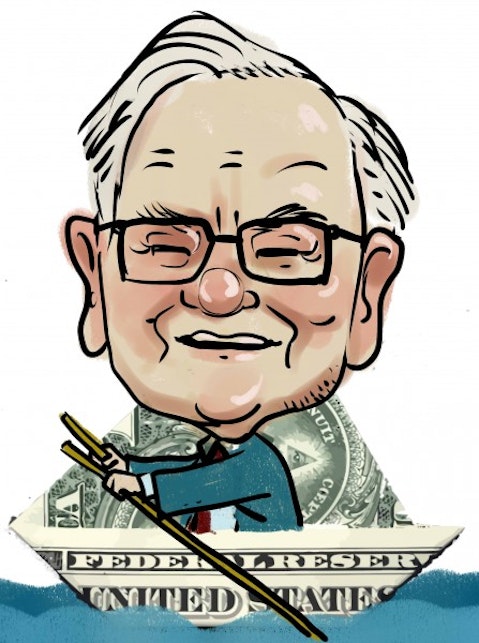A very interesting concept when analyzing hedge fund portfolios is learning how top portfolio managers allocate their assets under management into their best stock ideas. While there is a lot of theory about portfolio allocation, I think one of the best ways to learn is by simply analyzing the portfolio allocation of the best fundamental oriented hedge funds. These funds manage billions and have professional teams of fundamental analysts. There is nothing better to study a concept than by observing the concept itself.
I got the last updated (3Q ’12) portfolios from what I consider the best 29 value oriented hedge funds and created an Excel file where I input the % allocation from each fund’s top 15 ideas. As you will see, some of them hold more than 15 stocks and others less than 12. I simply wanted to answer some specific questions:
– In average, which % from the whole portfolio each fund allocated to the top 15 ideas ?
– How much individual weight they place to the top 5 positions ?
– How many ideas do you need to outperfom the market ?
– What is best, a concentrated or diversified portfolio ?
How the research started
The first step was selecting the top 29 value oriented funds. I did so by going to Insider Monkey and Gurufocus. While I knew that there are more than 29 great fundamental hedge funds, I know I could not include every name in my research.
The goal was to create a sample in order to learn how they allocated their stock portfolio in the last reported quarter. This is an image of the finished Excel file:
Interesting facts from the Excel
After creating the Excel file and calculated the averages I got some interesting facts to analyze:
1) In average, 70% of the assets under management (AUM) are allocated to the top 15 ideas
This fact reflects that you do not need 100 or more ideas per year to outperform the markets. It seems that these fundamental oriented funds concentrate their investments in just 15 super well-researched names and track those names with deep analysis and focus.
These funds seems to tell you that instead of trying to make hundreds of trades and diversify your holdings into lots of names it is better to focus on the best 15 or 20 ideas the market can offer.
2) Only 3 hedge funds allocated less than 20% its AUM in the best 15 names
It seems that hedge funds are more oriented to hold from 20 to 30 stocks in average. Again, fundamental oriented hedge fund managers seem to be against wide diversification.
3) How much they allocate to the top 5 positions ?
Let’s see how much in average they allocated to the top 5 holdings:
– Top holding: 14.68%
– Second holding: 8.88%
– Third holding: 7.57%
– Fourth holding: 6.10%
– Fifth holding: 4.70%
Hedge funds in average allocated almost 42% of their portoflios in the best 5 ideas. The challenge is to find stocks with limited donwside and above than average upside where you can allocate +10% of your portfolio with the confidence that if you are wrong, the long term downside scenario is very limited.
What hedge fund portfolio managers think about diversification ?
In the third quarter’s 2012 investor letter, Third Point’s founder Daniel Loeb wrote:
As we discuss in more detail below, the Third Quarter provided many opportunities to initiate or size up high-conviction positions. Following an analysis of our performance for the past several years, we have both reduced our overall number of positions and increased the concentration of capital invested in our ¨best ideas¨. We expect that the decrease in our equity book’s diversification should produce improved but ¨chunkier¨returns, and thus a moderate but acceptable increase in volatility
David Einhorn, founder of Greenlight goes against diversification. Insider Monkey describes his strategy:
Einhorn doesn’t shy away from having a concentrated portfolio in his fund. A single long idea can have up to 20% weight in the portfolio. The top five positions usually are 30 to 60 percent of the portfolio. The reason is pretty simple. The stocks he picks have the best prospects and there aren’t a lot of them. Investing in 8 to 10 stocks that are in different industries usually give a fund enough diversification. So, it’s not really necessary to have dozens of stocks in a portfolio
Warren Buffett is is widely quoted as saying : “Diversification is protection against ignorance.”
Bill Ackman is also against diversification. He made a speech at the Active/Passive Investor conference in which he referred to those investors who overdiversify as lazy.
They haven’t done enough research into any of their companies. If they’ve got 200 positions, do you think they know what’s going on at any one of those companies at this moment? As a result of overdiversification, their returns get watered down. Diversification covers up ignorance.
Conclusion
I think that there is a limited number of stocks a team of investors can follow, even the best hedge funds. By doing the research mentioned in this post I realized that holding 20 to 30 stocks is the sweet spot for many fundamental oriented hedge fund managers. In fact, they allocate in average 60/70% of their portfolios to the best 15 ideas.
It is important to remark that these funds have dedicated teams of analysts that spend the whole day calling companies, reading research and performing valuations. That is their key edge over other market participants. I think that invidivual investors have limited possibilities of matching the type of fundamental research these kind of funds can perform no matter how avaiable the information is over the web.
Overdiversification is probably better than underdiversification for the majority of small investors. Small investors have the edge of trading speed or the possibility of getting in/out of positions quickly, a skill that a $2b hedge fund can not get very easily. I am totally against day trading or looking for very short term profits. I think based on my experience that the best strategy for the individual investor is trying to focus in the best fundamental stocks (for example, the ones these hedge funds select) and wait to buy them when institutional investors start collectively buying these names and creating increased or abnormal buying volume into the stock. A skill that takes years to perform.
This article was originally written by Federico Flom, and posted on WarrenTrades.







